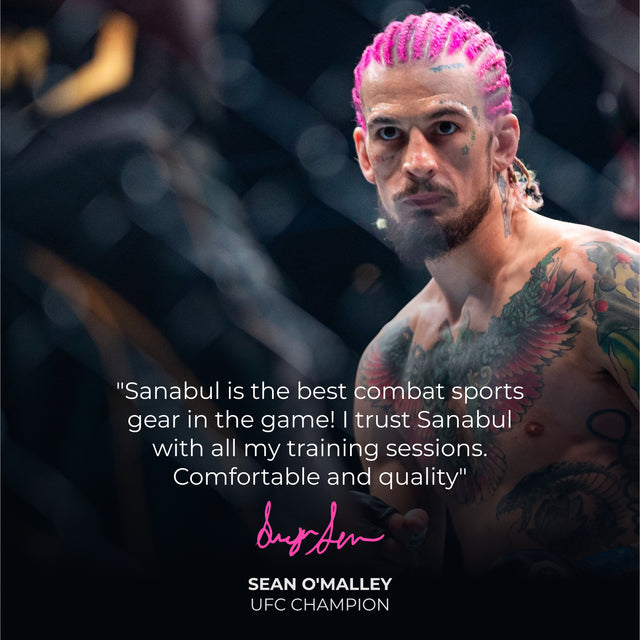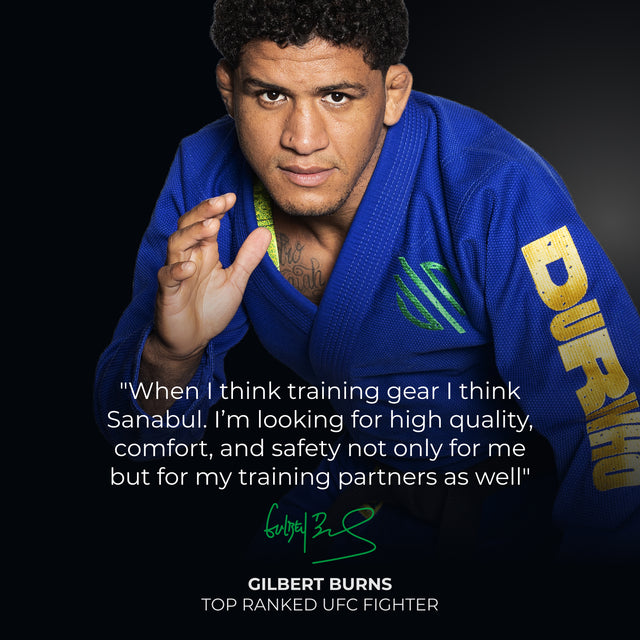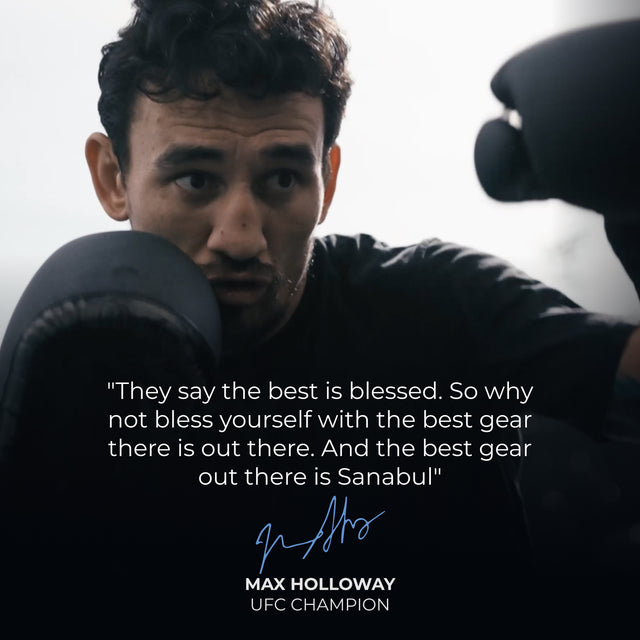Rough Living Conditions Help Forge Great Fighters
Introduction

There seems to be a trend in combat sports, when it comes to fighters who grow up in harsher environments and their success in combat sports.
DISCLAIMER: This is not to say that any one fighter is/will be better than another, purely based on the way they grow up. This article examines an interesting correlation between the background of fighters growing up and their success in combat sports.
Conditioned from a young age

There are many notable fighters who have been born and raised in harsh areas. The reason that we say notable is because of the great success they have had in combat sports.
The living environments of these areas may have played a big role in forging these athletes from a young age into the incredible fighters we know today.
We’ve put together a list of some fighters who fit into this category. You can find this at the end of the article!
Money

Money: a very important factor in the world. We’ve all imagined what we’d like to do if we had a lot of money: the things we could buy, the things we could do… but what about the other end of the spectrum? A much smaller number of people may have thought about what they would do if they had little to no money because that is a harsh reality to imagine. While it can be tough and even sad to think about, there are many who live this way.
In less affluent areas of the world, everything is affected by a lack of money/resources. What you do, how you do things, what you think about… Compared to wealthier areas like in the United States, the people living in harsher areas have less food to eat, less-developed living conditions, less material possessions, etc.
You get the point: these people just have less and have to make do with what they have.
How Less can be More

When people have less, they adapt to live a more essential lifestyle. They do what they need to. They eat what is necessary to survive, especially when their food supply is limited. Rarely will you see an overweight person when there’s just not enough food to go around, let alone to have the luxury of eating as much as you want.
When the weather gets extremely cold, they may use everything they have to wear and cover themselves from nature’s conditions. However this may not be enough and they still may be cold. So what do they do? Same thing they always do: they do what they need to do to survive.
What they lack in physical material, they make up for in the mental capacity. Let’s compare this situation in a harsher area to the same situation in a wealthier area.
During the cold storm, those living in a wealthier area can bundle up, as they have a lot of clothes that can keep them warm (some may even own expensive jackets, which keep them very warm). They also have the option of going in their house, that has heating which can be raised at the snap of a finger
On the other hand, the area with less will bundle up with everything they have but still may be cold, as (1) they may only have a few pieces of clothing to cover themselves and (2) their home may not have electricity/heating. They’ve physically done everything they can to keep warm, yet are still very cold. Mentally, they will have to be tough until the cold storm passes. Because what other option is there?
Lack of physical material forges mental fortitude

These harsh living environments create mental strength in many ways. The people there become very strong mentally, as they consistently endure difficult situations for extended periods of time. They learn to stay composed in tough situations, not panicking or overreacting when things get rough. They become more resilient, realizing that if they could withstand this challenge (and the others that they face), they could withstand much more in the future.
They become more and more desensitized to the difficult situations they experience constantly (both mentally and physically). Similar types of situations are not experienced to the same extent by those who have (comparatively) more, since having more means there is more they can do to avoid the worst parts of the obstacle (ex. staying in a heated house indoors, while others may not even have heat or electricity).
People living in areas with less adapt their mindset to compensate for the physical material they lack. They understand the tough situation they are in and how it can get even more difficult, but they brace/prepare for it, each time toughing it out and becoming more and more resilient in the process
Combat Sports

This same concept is applied to the activities that the children participate in: do what you can and adapt to compensate for whatever is missing. While the adults are working, the youth have to do something. If they have schools, they’ll attend. But even then, there could be a lot of downtime. So what do the children do for fun, especially when they lack many of the materialistic items that wealthier countries have?
They’re not scrolling social media on the newest iPhones. They’re certainly not playing video games on the newest gaming consoles on the newest TV screens.
If they’re not helping with hard, manual labor, they’re most likely training a sport. Just just any sport though: a combat sport.
Why are combat sports so common in less affluent areas?

Compared to many other sports, combat sports are the most primal sport. Primal in the sense that it’s as basic as sport can get. Combat sports training requires minimal equipment and surrounding environment – if any at all. All you really need is a person (or people) to train with, and even that is optional because there are many ways to train solo.
Yes, protective equipment is great, but it’s not always needed – especially if you don’t have it. You can (shadow)box without gloves. You can wrestle without headgear and wrestling shoes.
Other sports are much, much harder to train and play without equipment and other people. To play baseball, you need a ball, bat, and at least a couple of other people. To play tennis, you need a racket and another person. Even in their solo training, you need a ball and another piece of gear (if not, you’re training for the sport, not training the sport itself)
So in areas that have very little, combat sports become common. After school, the kids would go “play”. By their definition of play, they mean train until it’s time to go home because that’s what training is to them - an activity they can “play.” For example, two friends live in a very poor village. Aside from nature and the surrounding homes, there’s not much around. They don’t have very much, in terms of material possessions.
They’re limited in their activities, as they don’t have sports equipment. So they try to take each other to the ground. They continue at this and eventually discover different techniques for taking and holding their counterpart on the ground. They’re actually training, since they’re wrestling with one another. Since their village also lacks a lot, in terms of material possessions, all of the kids will turn to this activity. Every single day, they wrestle and wrestle. They’re consistently building more functional strength and mental strength.
They will do what they can, which means training the techniques with what equipment they have. They will adapt to compensate for what is missing, which can mean not striking a target with full force (since they don’t have protective equipment) or wrestling on the bare earth, instead of the mats that they don’t have.
When all they’ve known from a young age is training with minimal equipment, they know how to make do with what they’re given. They know how to eliminate all outside distractions and only focus on training everyday (instead of focusing on what they don’t have). When some become young adults, they move to locations where there are more opportunities for growth, like the US.
When they come to America, they visit gyms that have mats and all sorts of equipment. They became so good with little equipment (or none at all), now they have access to equipment? From here, they become even better and grow even faster thanks to the aid of the equipment.
The bottom line is that combat sports can be done pretty much anywhere, at any time, by anyone.
How Tough living conditions forge fighters

After experiencing many difficulties at their young age just living everyday life, they don’t know what giving up is. All they know is that things can and will get tough, but the thought of quitting never crosses their mind. They’ll just do what they have always done (because that’s pretty much all they know): tough the situation out, until it passes or until they find a solution.
For combat sports this translates extremely well. Mental toughness translates to physical toughness, as the human body is incredibly durable to outside stress. It’s usually the mind that gives up first, before the body.
The mental strain and physical pain tolerance become very high for fighters of this background, since they just will not quit. When they eventually make it to the world stage of competition, this is evident. Audiences see how hard they train, always pushing themselves further and further past obstacles. Then we see them fight, rarely giving up or quitting on themselves because once again, this is not something they often do. For these reasons, much of their mental and physical abilities can be attributed to the place they were raised (see the “Lack of physical material forges mental fortitude” section again)
Fighters who have grown up in rougher surrounding environments and their combat sports success (*records as of August 2024):
Khabib Nurmagomedov, UFC Lightweight Champion, 29-0
Khabib Nurmagomedov - Journey to UFC Champion
Islam Makhachev, UFC Lightweight Champion, 26-1-0
Petr Yan, UFC Bantamweight Champion, 17-5
Petr Yan - Journey to UFC Champion
Charles Olivera (Favelas of Brazil)
The origin of “Do Bronx” 🇧🇷 Charles Oliveira’s journey from the favelas to UFC | ESPN MMA
Jose Aldo (favelas of Brazil)
Leon Edwards
Rocky's Road to Redemption: Leon Edwards Documentary
Conor McGregor
Conor McGregor - The Champ Champ (An Original Bored Film Documentary)
Francis Ngannnou
FRANCIS NGANNOU - THE MOVIE (Documentary)
These are some of the most well-known examples of mma fighters who were forged by their tough backgrounds, to achieve great success in the sport. In other combat sports, there are many other fighters who have the same experience. They grow up in rough living conditions, which forges them and helps them achieve success later in life, through combat sports. In Muay Thai, some notable fighters who are included in this group are listed below (these are just a few of the many, many other Muay Thai fighters who grew up in poverty and achieved success in the ring):
Yodkhunpon Sittraiphum
Samart Payakaroon
Dieselnoi
Sagat Petchyindee
Superlek Kiatmoo9
Panpayak Jitmuangnon
Rodtang Jiutmuangnon
Below are some incredible videos, for more information about fighters who have grown up in rougher living conditions:
What Will Harris Learned Staying with Khabib in Dagestan | Joe Rogan
The Dagestan Chronicles - Anatomy of a Fighter (Will Harris)
Joe Rogan & DC Discuss the Dominance of Dagestani Fighters in the Octagon
Petr Yan - Out of Freezing Siberia
JOSE ALDO: FROM FAVELA TO THE OCTAGON™
Leon Edwards: Inspiring Journey to MMA Stardom
Conor McGregor - The Champ Champ (An Original Bored Film Documentary)
The story of Conor McGregor: A Complete Timeline of his MMA Career (Mini Documentary)
A Chance to Dream Through Muay Thai
The Hardships Superlek Kiatmoo9 Overcame On His Way To Glory
A Childhood Of Extreme Poverty Inspires Rodtang To Never Give Up
Andrew Tate on Khabib Nurmagomedov
Thank you for reading - we hope you found this article interesting and learned more about different fighters and their backgrounds!





0 Comments
There are no comments for this article. Be the first one to leave a message!